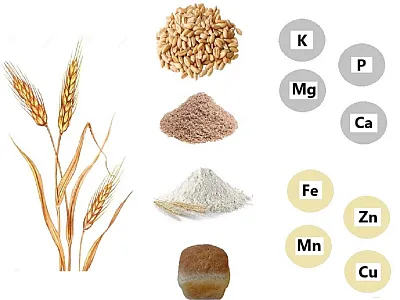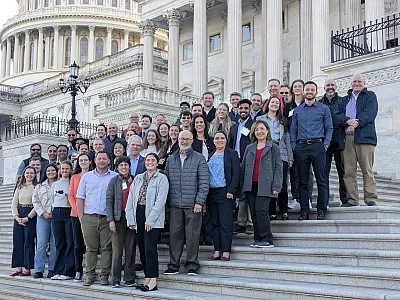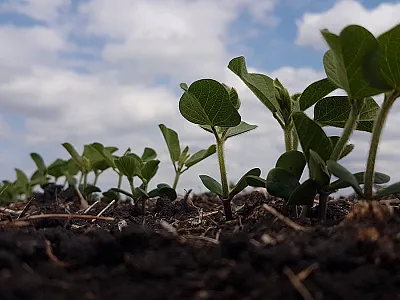Survey Identifies Weed Management Challenges in Nebraska
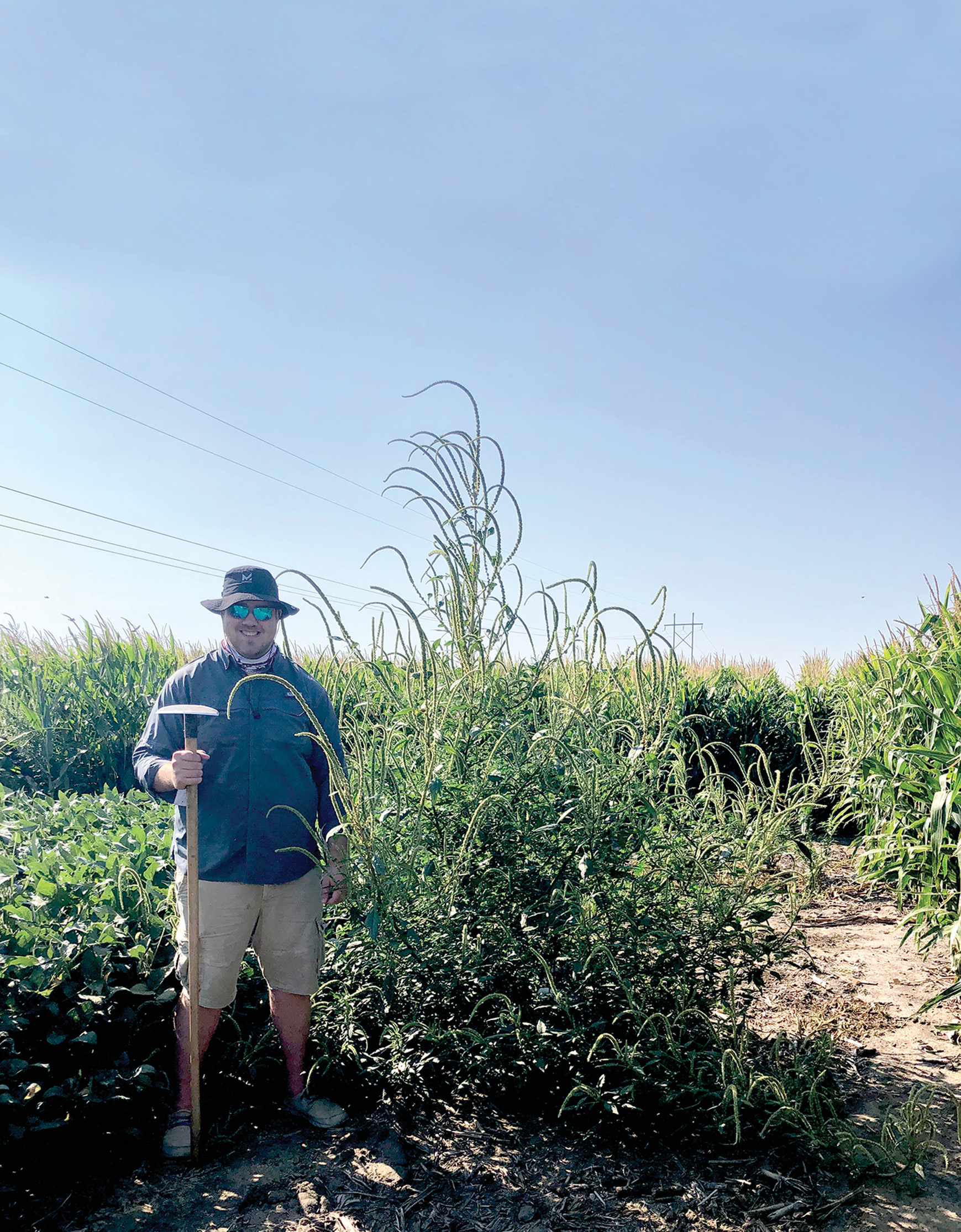

Weed management practices and challenges in agronomic crops were assessed in two University of Nebraska Extension surveys. The updated 2019–2020 survey results were compared with those from 2014–2015 to determine the changes in weed distribution, occurrence, and grower management strategies over the four to six years. A follow-up survey was conducted in August 2023 to asses Nebraska stakeholders’ perspectives on weed management challenges and current practices. Earn 0.5 CEUs in Integrated Pest Management by reading this article and taking the quiz at https://web.sciencesocieties.org/Learning-Center/Courses.
Weed management practices and challenges in agronomic crops were assessed in two University of Nebraska Extension surveys. The updated 2019–2020 survey results were compared with those from 2014–2015 to determine the changes in weed distribution, occurrence, and grower management strategies over the four to six years. The findings were published in Agrosystems, Geosciences & Environment (https://doi.org/10.1002/agg2.20425). A follow up survey was conducted in August 2023 to asses Nebraska stakeholders’ perspectives on weed management challenges and current practices. The use of glyphosate-resistant (GR) crops beginning in the mid-1990s was a boost to the agriculture industry. Corn, soybean, and cotton growers that planted GR strains now had an effective, low-cost herbicide to manage weeds. However, agronomist Shawn McDonald, who co-authored the paper during his graduate studies at the University of Nebraska–Lincoln, notes that predominantly using glyphosate to control weeds placed enormous selection pressure on weeds, favoring those able to survive. According to WeedScience.org, there are 530 unique cases (species × site of action) of herbicide-resistant weeds globally with 272 species (155 dicots and 177 monocots). In addition, the site states, “weeds have evolved resistance to 21 of the 31 known herbicides sites of action and to 168 different herbicides.”
Nebraska stakeholders (growers, Certified Crop Advisers, crop consultants, certified pesticide applicators, cooperative managers, and industry representatives) responded to the survey by answering a series of questions pertaining to farm size, tillage practices, primary crops produced, weed management practices utilized, and which weeds presented the most difficult challenges.
Crop Production
The surveys revealed the average farmed area remained around 1,977 ac with crop consultants scouting a state average of 11,520 ac in the earlier survey and 11,930 ac in the later survey. The 2019–2020 state average for no-till production area was reported as 65.5% with the largest area in the Southeast district (74.6%) and the smallest are (48.8%) in the Panhandle.
As expected, corn and soybeans were reported as Nebraska's major crops. The survey showed the most extensive corn-growing region in the Southeast district with 48.2% of the total farmed or scouted area planted to corn, closely followed by 46% in the Northeast. The Northeast and Southeast also came in as the highest soybean-growing regions. No soybean production was reported in the historically dry Panhandle region for the 2014–2015 survey, but soybean production there had increased to 18% in the 2019–2020 survey. Other crops were also reported in Nebraska, including grain sorghum, wheat, alfalfa, hay, cereal rye, and oat, with dry edible bean and sugarbeet grown in the Panhandle.
Problem Weeds
In both surveys, the most problematic weeds were those with known GR resistance. Interestingly, those weed species that made the top five list changed between surveys. Palmer amaranth ranked as the most difficult weed to control in the 2019–2020 survey, followed by horseweed, waterhemp, kochia, and giant ragweed. In contrast, the previous survey revealed waterhemp topped the list, followed by horseweed, kochia, velvetleaf, and common lambsquarters.
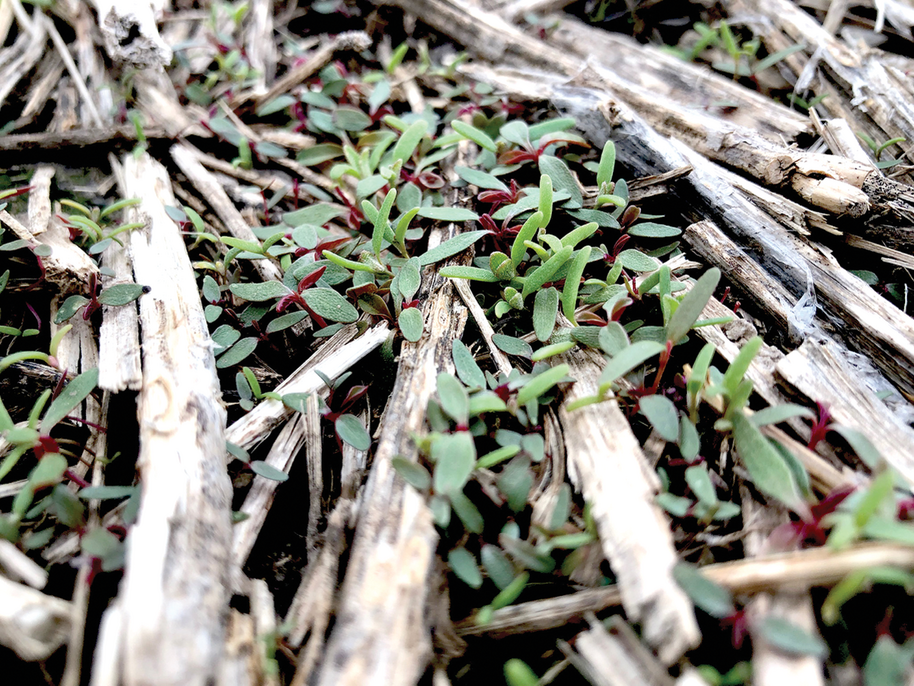
Palmer amaranth ranked sixth on the survey list in 2014–2015. However, in a 2016 and 2020 survey by the Weed Science Society of America, Palmer amaranth was ranked as the most troublesome weed in the United States.
“Within the short span of five years, Palmer amaranth has become the dominant problem in Nebraska corn and soybean fields. It is also making its way into other states, North Dakota, for example,” McDonald says. “Kochia in winter wheat is increasingly becoming a problem, and in eastern Nebraska where there is more rainfall, waterhemp is gaining ground.”
Weed Management
The majority of survey respondents noted that herbicide-resistant weeds were highly problematic. In the southeast, Nebraska districts, glyphosate- resistant weeds were listed as growers’ primary herbicide resistance concern.
“The best strategies control weeds before they impact crop performance and delay the evolution of herbicide resistance in weed populations,” McDonald states. To achieve this level of control, he recommends using diverse proactive management strategies:
• Utilizing herbicides with alternate modes of action or mixtures of herbicides that combine different modes of action impacts a broader spectrum of weeds, improves weed control, and reduces selection pressure on the existing weed populations.
• Applying herbicides at the full rate helps reduce the risk of developing resistant weed populations. “The dose provides the poison.”
• Selecting the appropriate spray nozzles with adequate spray volume will result in better coverage while minimizing drift.
• Paying attention to timing leads to better results. A two-pass system with pre-emergence (PRE) and postemergence (POST) herbicides will enable growers to start clean and stay clean.
• Utilizing overlapping residual herbicides and keeping to a schedule can significantly improve effectiveness. “Mark your calendar to get your POSTs applied 21–28 days after PRE applications.”
• Don't dismiss mechanical weed control. Tillage is a very effective tool, especially in combination with other strategies.
• Adding cover crops and increasing the variety of crop rotations can enable a broader range of herbicide use, increasing effectiveness and lessening GR selection pressure.
• Scouting for weeds before and after herbicide application is necessary for the overall success of weed management programs.
“The 4Rs that apply to nutrient management also apply to herbicide application.” The right products, right rate, right place, and right time applied to weed management will improve results, McDonald says.
“Late-season scouting, although it adds extra labor and rarely impacts yield, has long-term biological, ecological, and economic benefits that shouldn't be overlooked.” In particular, late-season scouting is essential to control weed species such as Palmer amaranth and waterhemp that exhibit prolonged emergence patterns. McDonald also believes it's important not to overlook tillage as a weed control tool, “Weeds are hard pressed to resist iron.”
“Starting out on the right foot applying a pre-emergence herbicide followed by a postemergence herbicide in 24 to 28 days, as well as incorporating a residual herbicide, enables growers to start clean and stay clean,” McDonald says.
To manage weeds effectively, he recommends growers match the herbicides used with the crops grown, their moisture pattern and soils, capabilities, and unique economic situation.
“Late-season scouting, although it adds extra labor and rarely impacts yield, has long-term biological, ecological, and economic benefits that shouldn't be overlooked.”

Concerns
Adding chemistries adds cost to growers’ bottom lines. The additional cost comes into play with the purchase of additional chemicals, increased applications, and fuel. The survey revealed that the cost of weed management across the districts in GR corn and soybean was, on average, $41 and $47 per acre, respectively. The cost of weed management reported in the earlier survey was, on average, $36 for corn and $33 for soybeans.
In addition to cost concerns, growers surveyed listed drift, off- target movement, and legal issues as additional worries. More than 45% of stakeholders indicated they were looking for education about proper application and identifying the signs of temperature inversions. A large percentage of respondents, 22%, had concerns that relying on new technologies used in POST applications, specifically synthetic auxins, would lead to resistance.
Diverse Management Strategies Help
Survey results showed 80% of Nebraska growers suspected at least one herbicide-resistant weed species
on their farm. Although there is growing concern regarding GR weeds in Nebraska and other states, glyphosate use continues in part due to its ease of use and low cost, McDonald noted. While glyphosate remains quite effective in controlling a wide range of weeds, diversifying weed management strategies is imperative to control weeds and delay the development of herbicide resistance.
In closing McDonald says, “Si vis pacem parabellum. When it comes to weed control, if you want peace, prepare for war.”
Dig Deeper
For more details, check out the original open access article: McDonald, S.T., Sarangi, D., Rees, J.M., & Jhala, A.J. (2023).
A follow-up survey to assess stakeholders’ perspectives on weed management challenges and current practices in Nebraska, USA. Agrosystems, Geosciences & Environment, 6(3), e20425. https://doi.org/10.1002/agg2.20425
Self-Study CEU Quiz
Earn 1 CEU in Nutrient Management by taking the quiz for the article at https://web.sciencesocieties.org/Learning-Center/Courses. For your convenience, the quiz is printed below. The CEU can be purchased individually, or you can access as part of your Online Classroom Subscription.
- Applying herbicides at the full rate helps reduce the risk of developing resistant weed populations.
- True.
- False.
- In a 2019–2020 survey of Nebraska stakeholders on weed management, which weed ranked as the most difficult to control?
- Horseweed.
- Waterhemp.
- Palmer amaranth.
- Giant ragweed.
- The latest survey revealed that the average cost of weed management across the districts in glyphosate-resistant corn
- remained the same since the last survey.
- decreased by $2 per acre since the last survey.
- was higher than the cost in GR soybean for both surveys.
- increased by $5 per acre since the last survey.
- Survey results showed that ___ of Nebraska growers suspected they had at least one herbicide-resistant weed on their farm.
- 33%
- 80%
- 88%
- 95%
- Mechanical control options like tillage are NOT effective tools in managing herbicide-resistant weeds.
- True.
- False.
Self-Study CEU Quiz
Earn 1 CEU in Nutrient Management by taking the quiz for the article at https://web.sciencesocieties.org/Learning-Center/Courses. For your convenience, the quiz is printed below. The CEU can be purchased individually, or you can access as part of your Online Classroom Subscription.
- Which of the following is NOT a characteristic of the southwestern region of pecan production?
- Limited water availability.
- Higher incidence of insect pests.
- Low level of disease pressure.
- High level of disease pressure.
- The blackmargined aphid and the black pecan aphid are both difficult to identify at their immature or nymphal stages.
- True.
- False.
- When can initial infestations of yellow aphids be seen?
- As early as May and continuing throughout the season until leaf drop in late October.
- No earlier than July and continuing throughout the season until leaf drop in late October.
- Starting in May and ending in July.
- Starting as early as April and ending in July.
- What has been a demonstrated effect of the use of a fermenting molasses solution on pecan foliage during an aphid outbreak?
- Reduced ladybeetles and lacewings.
- Increased black margined aphid population.
- Reduced black margined aphid population.
- Increased yellow pecan aphid population.
- The varieties Avalon, Caddo, Gloria, Kiowa, Oconee, Stuart, Sumner, and Zinner are particularly susceptible to aphid infestation.
- True.
- False.
Text © . The authors. CC BY-NC-ND 4.0. Except where otherwise noted, images are subject to copyright. Any reuse without express permission from the copyright owner is prohibited.




